-
Posts
14,343 -
Joined
-
Last visited
-
Days Won
25
Content Type
Profiles
Forums
Blogs
Gallery
Events
Store
Posts posted by Ed_Haynes
-
-
So . . . if anyone out there happens to have:
Lenin #213801, 6 August 1952
Medal for Distinguished Labor #69650
Please . . . .
0 -
And the awards.
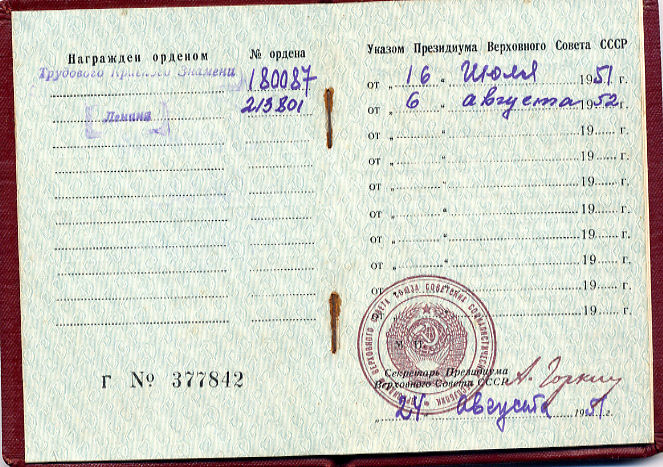
 0
0 -
And the second document.

 0
0 -
And the awards.
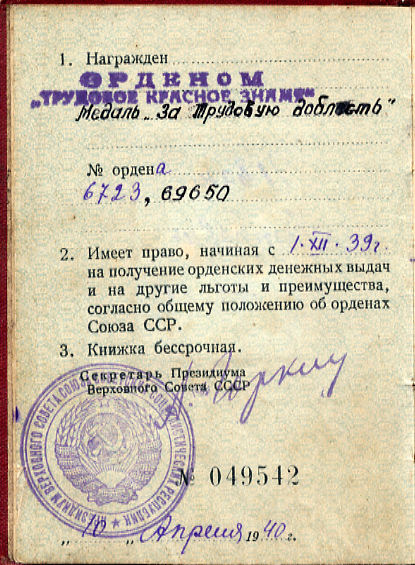
 0
0 -
Photo closeup.
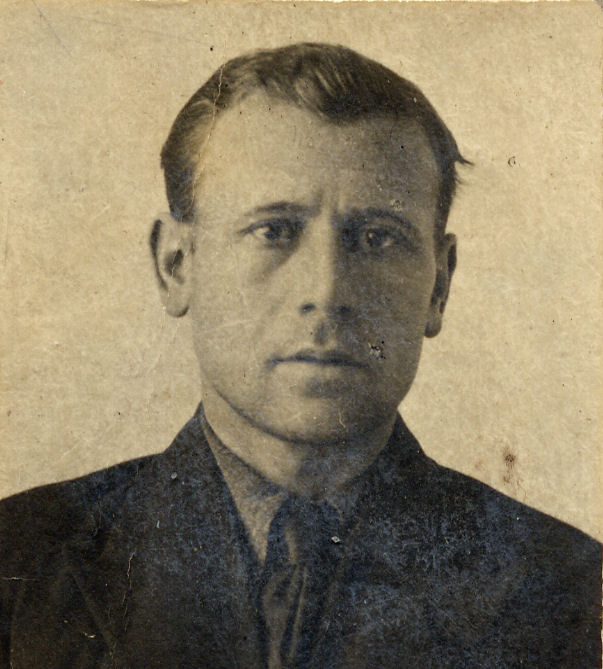
 0
0 -
Two documents, the older one, part one.
Can anyone please help with the name?


 0
0 -
Just in. Unresearched and probably unsearchable. Also a broken broup. But still nice?
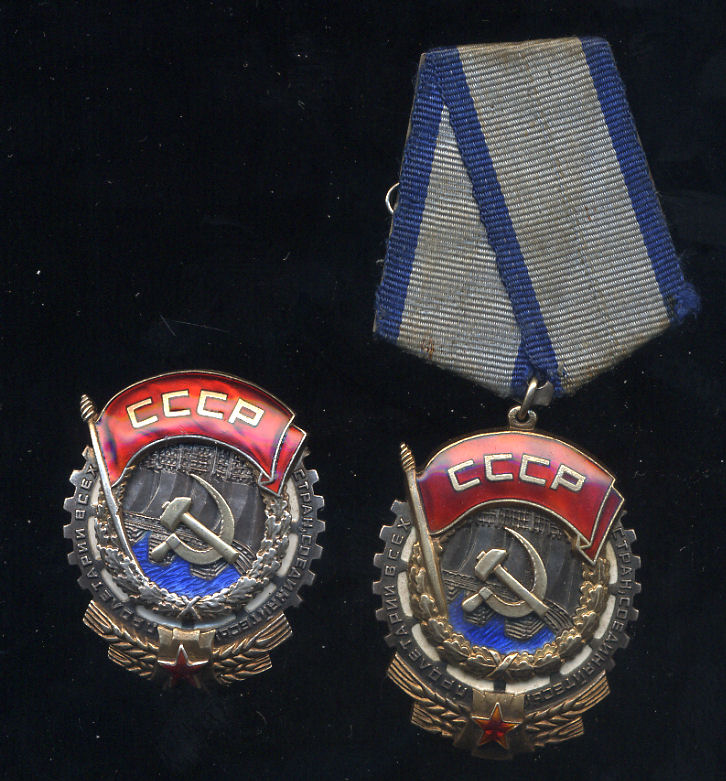
 0
0 -
-
And the document for the Dukhla Commemorative Medal, part one.
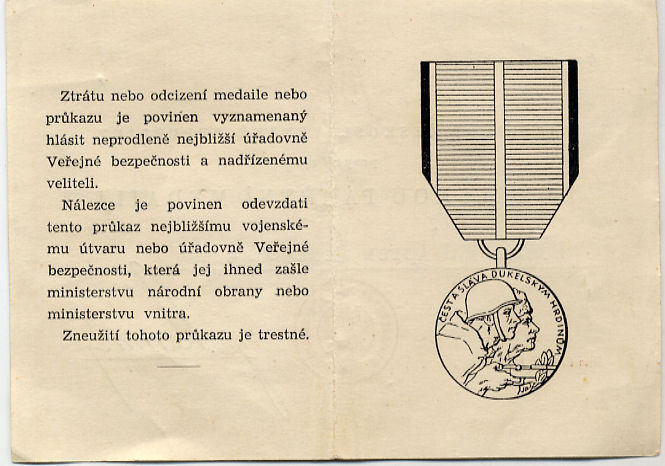
 0
0 -
And the awards.
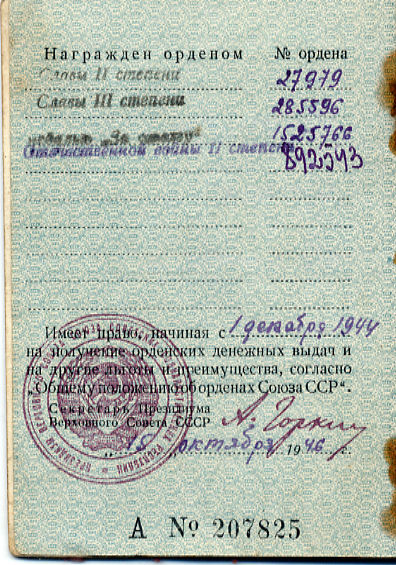
 0
0 -
Document part one.
Can someone please help with his full name?


 0
0 -
As the research was summarised and described by the vendor:
Artyom Ivakhnenko was drafted into the Red Army in late 1943, following the liberation of his native village in Kiev Region.By July 1944 he had the rank of Junior Sergeant and served as deputy rifle platoon commander in 385th Rifle Regt., 112 Rifle Div., 13th Army, 27th Rifle Corps, 1st Ukrainian Front. On July 6, he assumed duties of his fallen platoon commander, rallied the platoon to attack, and was among the first to break into the enemy trenches. In this engagement Ivakhnenko was seriously wounded (his second wound of the war). On July 23, he was recommended for an Order of the Patriotic War, 2nd cl. by his regiment commander, and on 10 August 1944 awarded with it by a decree of the 27th Rifle Corps.
After recovering from his wound, Ivakhnenko was reassigned as member of a mortar crew to 227th Rifle Regt., 183rd Rifle Div., 38th Army, 101st Rifle Corps, 4th Ukrainian Front. During the October - November battles in the Beskides (continuation of the Carpathian mountain chain), he was instrumental in eliminating 24 German soldiers, 2 heavy machineguns and 4 lorries with ammunition. On 10 November 1944, he was awarded with the Medal for Valor.
In January 1945, Ivakhnenko distinguished himself during the fighting in the eastern Czechoslovakia. On January 18, his mortar crew suppressed 2 enemy machine-gun emplacements and killed as many as 12 German soldiers. On January 21, by accurately laying the mortar he suppressed an enemy firing emplacement, and on January 25, suppressed 2 heavy machineguns and killed up to 8 enemy soldiers. For bravery and skill, on 21 February 1945 Ivakhnenko was awarded with the Order of Glory, 3rd cl.
On 30 April 1945, Ivankhnenko was among the first in his unit to ford the Oder river in its upper stream near Moravska Ostrava. Keeping up with the infantry, he positioned his mortar near the edge of a village, fired at the retreating enemy, and killed 10 German soldiers. When the Germans counterattacked on May 5, Ivakhnenko quickly deployed the mortar. He then ordered the other soldiers of his mortar crew - by then he had been promoted to the crew commander - to take positions at the windows of a nearby house with their personal weapons. His rapid fire killed 6 enemy soldiers and forced the rest to retreat. For this feat, Ivakhnenko was awarded with the Order of Glory, 2nd cl. on 1 June 1945.
When the original research either resurfaces or gets done all over again, I shall of course post it here.
 0
0 -
Just in, research has been done, apparently, but, equally apparently, seems to have strayed from the group. (Grrrr.)

 0
0 -
Breathtaking

And, believe it or not, Gerd, the scan doesn't really do it justice.
 0
0 -
BIKANER:Order of the Sadul Star of Bikaner, 1st class
Clearly the sash badge of "someone". Yellow and white gold set with diamonds and rubies.
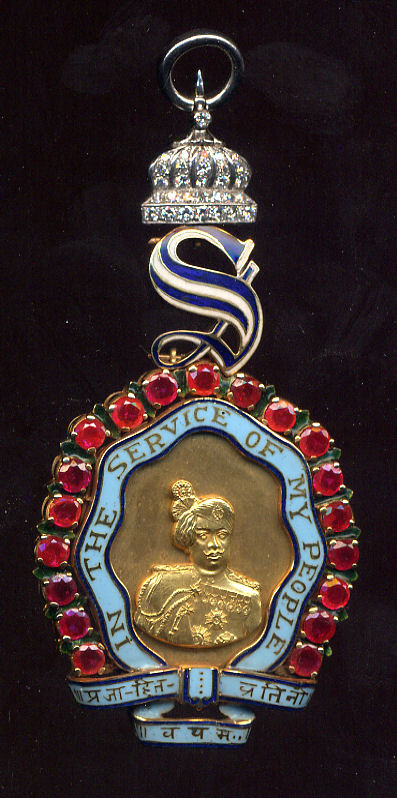
 0
0 -
And, therefore, it isn't "communist"?
Can someone with The Power move it, please?
We have actually gotten some lovely post-Imperial and pre-Revolutionary Chinese items over on the OMSAS site,and more to come. Now we just need some information!
0 -
A pretty one, with some history on the ribbon!
0 -
To clarify - Not all collectors of British medals like the plated and shiny ribbon look, no more than all US medal collectors like the anodized look that has been invented by some dealers. Yes, reribboning is more accepted than among, say, German collectors, but whose standards constitute the 'norm'?
0 -
As I shall soon share here, I have an ethical dilemma brewing. Just picked up, yesterday, two nice WWII-era Soviet medals here in New Delhi (how'd they get here?): A four-digit "No." Medal for Bravery and a 1944-ish Medal for 'Combat' Service. They came with all suspension rings, but no suspenders and no ribbons. I am inclined to leave them loose. But . . . ???
0 -
Given conditions of climate and the systems of primary medal 'wholesaling' that prevail, it is rare that I see even a post-independence (post-1947) Indian group with original ribbons. Even groups come tied together with string or wire. So, unless one likes their medals naked, reribboning is an unfortunate fact of life. Sometimes reribboning is necessary to preserve the scraps of original ribbon that survive, but they are preserved. While old ribbon can be found, it is getting rarer than the medals themselves.
Among collectors of British medals, reribboning has perhaps become too common, especially given the incredibly ugly modern ribbons that exist.
Yet, I'd suggest that there are VAST differences among:
1- Reribboning naked medals.
2- Stripping off old ribbons and replacing with new glow-in-the-dark synthetics just becausde you like the tacky look.
3- Polishing medals and stripping away decades of sexy patina.
4- Dipping the medals in shiny plating stuff because you like sparkly things.
5- Enameling your medals pink, engraving your name on them, and drilling holes in them simply because you feel they are yours to do with as you wish.
While we may differ on where the "good practices / naughty practices" line falls, we (or maybe at least most of us?) may agree that some of these are beyond the limits of ethical behavior.
Tens of thousands of years ago, when I worked as a summer intern at the Smithsonian, two basic rules of preservation were stressed over and over: (1) Do no restoration that is not an obvious restoration, that can ever be confused with the original. If George Washington's uniform jacket needs reinforcing, do it where it cannot be seen with modern white chemically neutral thread and make no effort to use "replica" "period" thread. Do not try to fake originality. (2) Do no restoration that cannot be easily reversed without doing additional damage and above all make no permanent changes. If the enamel on General Pershing's Legion of Honor is cracked to the point that it REQUIRES fixing, do not under any circumstances re-enamel it, but use a white water-soluble material (I think it was something like a cornstarch and water paste with water colors mixed in) to reinforce it (that can easily be washed off later on).
Aren't these fair guidelines for us?
0 -
He is, by the way, not listed in the CWGC casualty rolls, so the chances are high that he suvived the war.
Next stop?
1- His MIC medal card, available online at National Archives (for a fee)
2- War Diaries, at the National Archives
3- Regimental histories
And, also, a good close look at the naming by someone familiar with his regiment.
0 -
London Gazette, 31 January 1919 (published 1 February 1919), p. 1655
http://www.gazettes-online.co.uk/archiveVi...;selHonourType=
"2nd Lt. Herbert Robert Davis, 2nd Bn., Lond.R.
"For conspicuous gallantry and good leadership near Oisy-le-Verger on 27th September, 1918. He cleared over 2,000 yards of trench, system, including 18 dug-outs, a large wood and a cemetery. He skilfully outflanked machine guns and snipers, in one case having to make four distinct attacks before capturing an obstinate machine-gun post. His two platoons captured in all 100 prisoners, eight heavy and four light machine guns, and two anti-tank rifles."
0 -
Let me see what I can find. The online London Gazette is notoriously cranky. And additional problem comes when some researchers/collectors record the actual date of the gazette (which you can find easily) and some record only the date of the notification (which you can't find).
The best source for a full recommendation will be the war diary of his unit, and these are held in the National Archives at Kew, just outside London.
Named MCs can be tricky for, as you said, all that are named have been done privately, and you can never be 100% sure when the naming was done, then or last week.
0 -
1. Did I obtain this medal for my own private collection to enjoy forever ?
Good points, all. But, Dick, how does one obtain eternal life? Like it or not, we are NOT the owners of these medals. The only 'owner' is the usually deceased recipient. It was his or her award, and he or she had certain rights. These included the right to reribbon, to modify (for example, screwback to pinback), to use fine enamel or nasty nail polish to repair enamel problems, or to carve their name on the reverse. All these rights lapsed with the death of the only real owner. Thereafter, we have become merely one in a string of custodians (unless Dick's eternal life magic is made public) who have rented (often with a hefty pricetag) the right to host this award for a few years or decades. Whether we see the medal as a short-term investment or a lifetime friend, we have only one right: to recognise that we do not have the right to make permanent changes to the medal and have the solemn duty to research the recipient to whatever extent we can so as to preserve their memory. Then, in a few decades, we pass the medal on to the next custodian in a chain that, we hope, stretches on into the future unless some intervening busy-body vandal mutilates the piece of history that once lay in our hands in and our collection.
Sorry, guys, this is something I feel strongly about. I see this 'hobby' as being 'about' history and a debt to the past and not about crass personal property or easy greedy profits. These are not 'things' or 'private possessions', these are the only tangible pieces surviving of a person's life and history.
0





Vasili Dimitrievitch Bolkhovityanov
in Russia: Soviet Orders, Medals & Decorations
Posted · Edited by Ed_Haynes
Nice new document and badge.